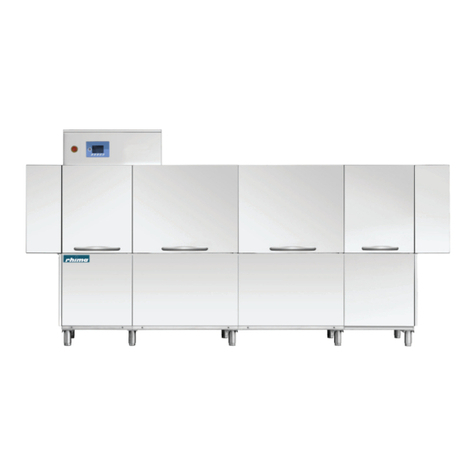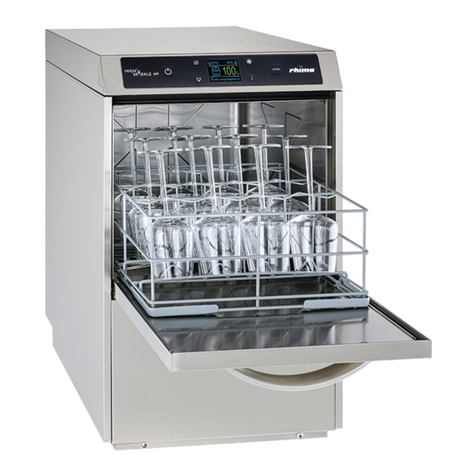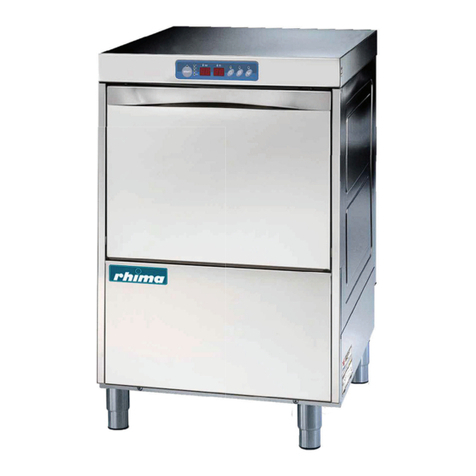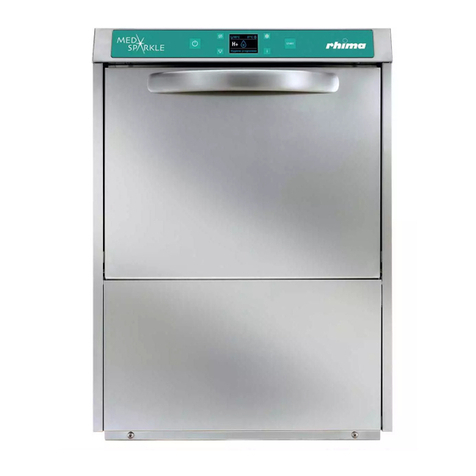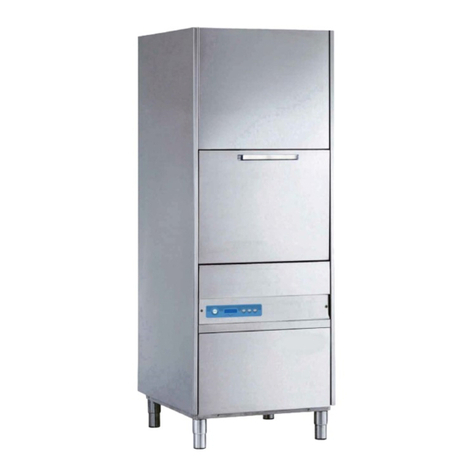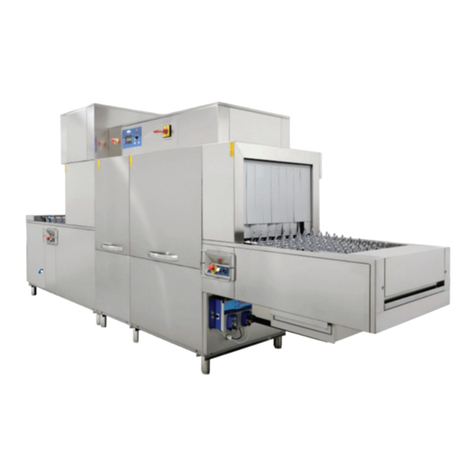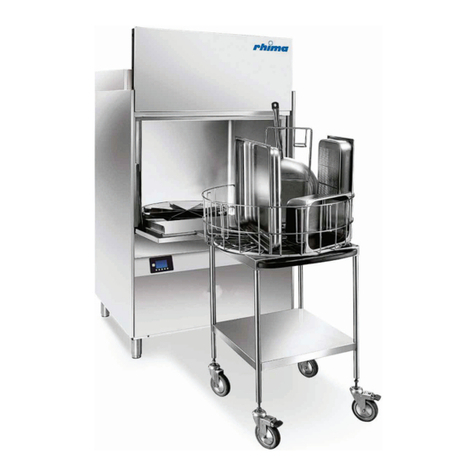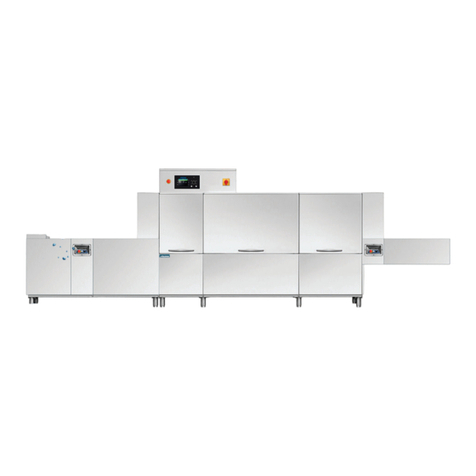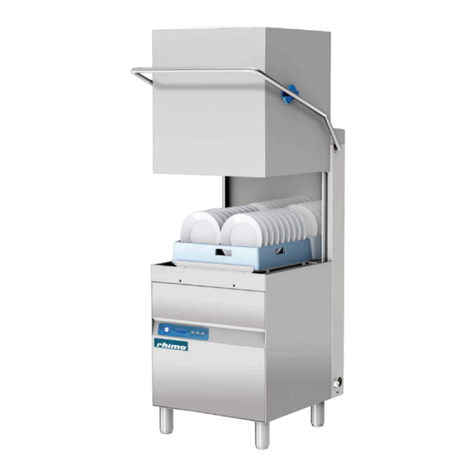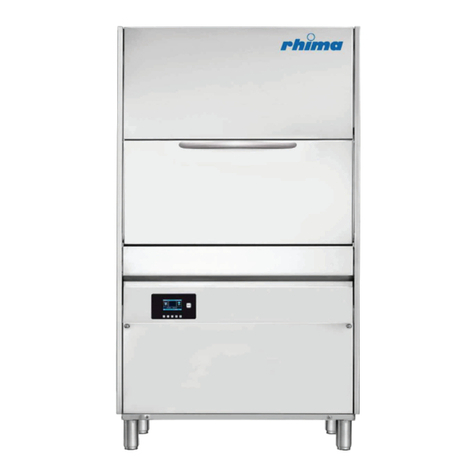
Wash module(s): a proper washing of the crockery is performed with temperature thermostatically controlled.
Rinse module: a pre-rinse is performed that removes most of the detergent, then a final rinse is performed with high
temperature thermostatically controlled.
Autotimer: the Autotimer function (activated by default) allows stopping the machine if it is in start-mode but not operating
at the moment.
It can happen in these cases:
1. The machine is working in vain (it is in operation but it is not used).
2. The machine is in operation but a baskets accumulation exiting the machine causes the limit switch SQ1 to trip (F1).
3. The machine is in operation with the drawer Mopen.
In these cases, the timer set by default at 300 seconds trips. When the time is over the energetic saving mode turns on.
By inserting a basket, clearing the exit or closing the drawer the machine restarts automatically to operate.
Available options
Automatic shower with drawer strainer B:
Module with low temperature water thermostatically not controlled, with drawer strainer M.
The filter collects the food residuals and it can easily be removed and cleaned during the operation thanks to the drawer,
without opening the doors and getting in touch with the washing solution.
If the drawer is extracted during the washing, the machine stops the conveyor, the rinse and the module pump to allow the
filter cleaning.
The wash pumps keep working.
The machine restart the operation as the drawer is repositioned.
Make sure that during the operation the filter is clean and correctly positioned.
Dryer G:
It conveys hot and dry air that creates the ideal conditions for the rinse aid action.
Depending on his/her needs the operator can turn on or o the dryer module heating part using the dedicated key, during
the work.
Heat recovery L:
The goal is the recovery of the steam heat exiting the machine that otherwise would be dispersed, and use it to pre-heat
the water entering the boiler.
The machine must have a cold water supply for the rinse.
Heat recovery with heat pump L:
The goal is the recovery of the steam heat exiting the machine that otherwise would be dispersed, and use it to pre-heat
the water entering the boiler.
It exploits a heat pump to further increase the water temperature entering the boiler.
The machine must have a cold water supply for the rinse.
WARNING: If this optional is present the Autotimer must be set to a minimum value of 300 seconds
WARNING: Heat Recovery system and Steam Condenser - installation (optional)
It is strictly forbidden to connect the machine’s vent directly with the outdoor!
Cold weather conditions might seriously damage the Thermal Recovery system or the Steam
Condenser.
Pressure Increase Pump:
It allows a proper machine operation when the feeding water pressure of the machine is lower than 200 kPa.
Self-cleaning:
The system allows carrying out an automatic internal machine cleaning and rinsing cycle, when it has finished operating.
Specific sanitizing product can be used.
The self-cleaning can be carried out only if:
• The machine is in stand-by
• The doors are closed
• The tanks are empty.
The display shows the Self-cleaning screen.
During the cycle all the other functions are disabled. If there is no electrical supply the cycle will be restarted automatically
to ensure a proper execution of the cycle.
Self- Cleaning pressure increase pump:
It allows a proper Self-cleaning operation when the feeding water pressure of the machine is lower than 200 kPa.
Inlet water temperature probe:
The option allows to show the inlet water temperature on display.
5

